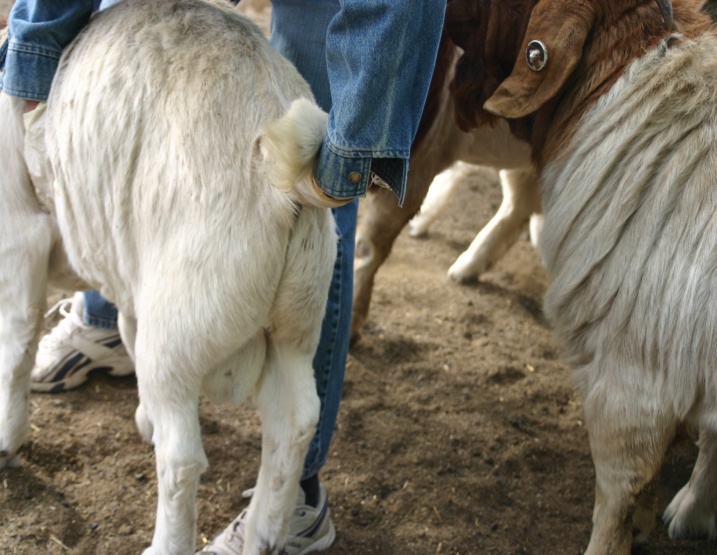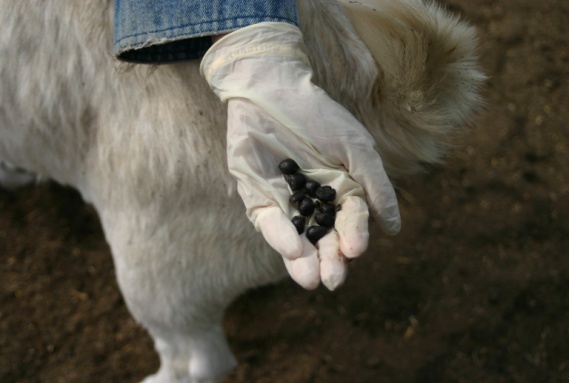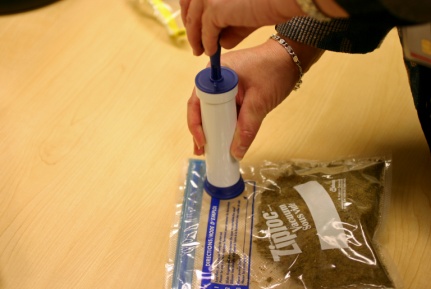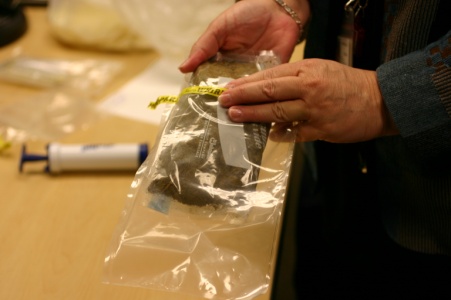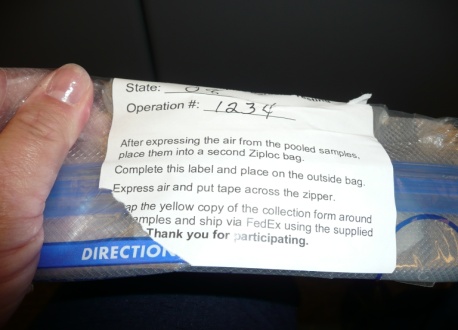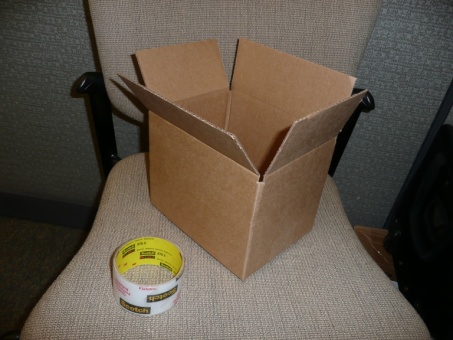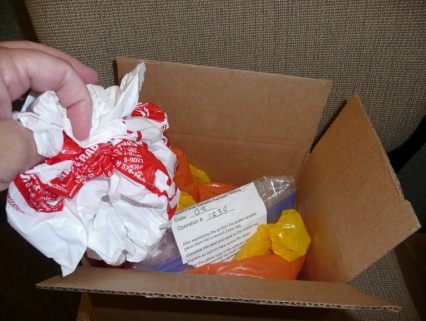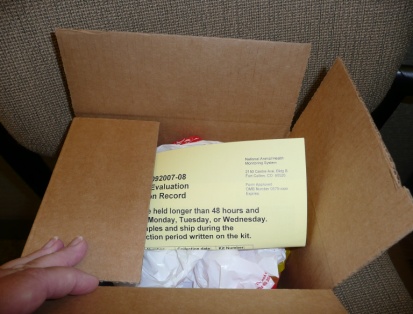NAHMS 250 Sheep 2011 - Parasite Evaluation Collection Record
National Animal Health Monitoring System Sheep 2011 Study
NAHMS 250 Sheep 2011 Parasite Eval
National Animal Health Monitoring System Sheep 2011 Study
OMB: 0579-0188
Animal
and Plant Health Inspection
Service Veterinary
Services
National
Animal Health Monitoring System 2150
Centre Ave, Bldg B Fort
Collins, CO 80526 Form
Approved OMB
Number 0579-0188 Expires:
6/30/2013

Sheep 2011
Parasite Evaluation
Collection Record
DRAFT October 19, 2010
Thank you for participating in the NAHMS Sheep study and for taking the time to sample your sheep for parasites. In order for the test results to be accurate and of value to your operation, read all of the materials received and follow collection and shipping instructions. It will take several weeks for confidential test results from your operation to be mailed back to you.
Please review these instructions:
Samples MUST BE taken between March 1 and May 25, 2011.
The operation must collect samples from at least 6 sheep or lambs, although up to 10 animals can be sampled. Sheep from weaning to 2 years old are most likely to excrete eggs if infected; therefore, this age group should be targeted. However, samples can be taken from any age animal suspected of having parasites.
Sheep must not have been treated with a dewormer within 45 days prior to sampling.
Samples need to be fresh and collected directly from the rectum in order to eliminate environmental contamination of the sample.
Target sheep suspected of having parasites.
Shipping guidelines must be met.
Samples must be shipped within 1 day of sampling.
Samples must be shipped on a Monday, Tuesday, or Wednesday.
Check Kit Contents
The sampling materials will come in a small Federal Express box with the kit number and collection date range on the outside of the box. The kit contains the following:
10 pairs of gloves Ziploc vacuum starter kit Lubricating jelly Shipping box Paperwork
The paperwork consists of:
These collection and shipping instructions
3-part carbonless paper submission form
A label to attach to the sample bag
A postage-paid envelope addressed to the NAHMS program in Fort Collins, CO.
A prepaid/pre-addressed Federal Express airbill for the samples.
If you are missing any materials or have any questions, contact Judy Rodriguez at NAHMS by phone
(970-494-7255) or email ([email protected]).

Before Collection Day
Check Federal Express Availability.
Samples will be shipped overnight via Federal Express. Contact FedEx to determine a local drop-off and hours of operation for a location that accepts Priority Overnight packages. 1-800-gofedex (1-800-463-3339) or www.fedex.com
Submission Form and Label
Write firmly so information appears on all 3 pages of the carbonless forms.
Enter the date you collected the samples. The State, Operation and Kit number are already recorded.
Record the age for each animal sampled and answer the questions.
On the label, write in the Operation number found on the submission form.
Collection Instructions
Sample at least 6 sheep or lambs and up to 10 animals. If you have 6 to 9 animals, take as many samples as you have sheep or lambs (e.g., 8 sheep = 8 samples).
RECTAL RETRIEVAL To avoid contamination from common organisms from the ground, rectal retrieval is best. |
|||
|
1. Apply lubricating jelly to the glove before entering the rectum.
|
|
2. Retrieve a minimum of 6 pellets per animal.
|
Need sheep pic |
Need sheep pic |
|
|
3. Place pellets in a Ziploc bag from the Vacuum Starter Kit.
4. Continue collecting samples from other sheep using a clean glove for each. Place all samples in the same bag. You will get one test result for the operation. |
|||
ALTERNATIVE if you cannot collect the samples rectally. Try to catch pellets onto a piece of clean cardboard, box or lid. Sheep have a tendency to defecate when they get up and that may be the best time to trail after with a box. |
|||
|
Try to collect samples on clean cardboard.
|
Do not collect samples off the ground. Clean, fresh feces are required for analysis. |
|
Prepare the Pooled Samples |
|||
|
1. Knead the bag until individual fecal pellets cannot readily be seen.
|
|
2. Zip the bag closed.
3. Use the vacuum pump to squeeze out excess air. |
|
|
|
|
|
4. Roll the sample bag up and place into another Ziploc bag supplied with the pump.
|
|
5. Place the label that comes with the paperwork over the zipper end of the bag to assure the vacuum holds during shipping.
|
Shipping Instructions – Samples must not be frozen.
If possible, box and ship samples on the same day (Monday, Tuesday, or Wednesday).
Samples that are vacuum-sealed can be held for 24 hours.
|
1. Tape open the provided box with shipping-strength tape. |
|
2. Place the sample in the box along with newspaper or other packing material to lightly fill in box. |
|
|
|
|
|
3. Place the yellow copy of the submission form on the top of the material and seal the box. |
|
4. Place the provided FedEx airbill on the outside of the box.
|
5. Mail white copy of the submission form to NAHMS using the postage-paid envelope. Keep the pink copy for your records.
The Sender’s Copy of the FedEx airbill can be sent to NAHMS or left with the package when dropped off.
|
|||
National
Animal Health Monitoring System Form
Approved OMB
Number 0579-xxxx Expires:
Animal
and Plant Health Inspection
Service Veterinary
Services

Sheep 2011
Parasite Evaluation
Collection Record
Samples can be stored in the refrigerator or at room temperature and cannot be held longer than 24 hours before shipping to the lab. Samples must be shipped on Monday, Tuesday, or Wednesday.
State: |
Operation Number:
|
Kit Number: |
Collection Date:
(mm/dd/yy) |
BE SURE TO COLLECT SAMPLES FROM SHEEP THAT YOU SUSPECT HAVE PARASITES.
1. For each animal you take a fecal sample from, write down the age in years.
If under 1 year of age, make it clear the age is months (e.g., 6 months).
EXAMPLE Age |
Age |
Age |
Age |
Age |
Age |
4.5 yr |
|
|
|
|
|
|
|
|
|
|
|
IF WEANED BUT LESS THAN 1 YEAR, MAKE IT CLEAR THAT THE AGE IS MONTHS. |
|||||
2. What is the total number of animals you sampled?
(Should equal the number of ages listed above) ________ head
For the following, write in responses. If zero or none, write in 0. If you cannot answer
a question or it is not applicable, please note the reason in the margin.
3. In the pen/area where these samples were taken, how many
a. unweaned lambs are present? __________ head
b. weaned lambs 4 months to 1 year of age are present? __________ head
c. sheep between 1 and 2 years of age are present? __________ head
d. sheep 2 years of age or greater are present? __________ head
Total sheep in area __________ total
4. What is the total number of sheep in your flock?……………………………………….. _________ flock total
Continued on next page.
Please write in the Operation Number printed on the
previous page in case these two pages became separated: Operation # ________________
5. What breed of sheep were sampled (check all that apply)?
TBD
Other breed or cross
SPECIFY:_______________
6. Were any of the following used to select the sheep that were sampled?
a. Animal showed clinical signs 1 Yes 3 No
i. IF YES, what were the signs?
Diarrhea 1 Yes 3 No
Weight loss 1 Yes 3 No
Poor hair coat 1 Yes 3 No
Anemic 1 Yes 3 No
Other signs 1 Yes 3 No (specify:____________________)
b. Other reasons sheep were selected for sampling?
(specify: ________________________________) 1 Yes 3 No
7. Are you using copper wire particle boluses or other nondrug dewormer treatments? 1 Yes 3 No
IF YES, please list:__________________________________________________
8. Before today, have these sheep EVER been treated with a dewormer? 1 Yes 3 No
IF YES, what date were they last treated? (Explain in margin if you don’t know.). ___________ mm/dd/yy
IF YES, check all product(s) used.
1 Albendazole (Valbazen®),
2 Fenbendazole (Safeguard®, Panacur®)
3 Avermectin/Milbemycins; Ivermectin (Ivomec)®)
4 Moxidectin (Cydectin®)
5 Levamisole (Tramisol®, Levasole®, Prohibit®)
6 Pyrantel (Strongid®)
7 Morantel (Rumatel®)
OR LIST HERE: __________________________________________________
9. Which best describes the management of the sampled sheep during the past 30 days?
1 Open range (large unfenced acreage)
2 Fenced range (large fenced acreage)
3 Fenced farm (cultivated pasture or browse)
4 Dry lot (pen which does not allow grazing and is not meant for
finishing sheep on a high-energy diet for slaughter)
5 Other (specify: ______________________________________)
Send Yellow pages with samples to the lab. Send Original pages to NAHMS in Colorado using the provided postage-paid envelope. Keep the pink copy for your records.
The Sender’s Copy of the FedEx airbill can be sent to NAHMS or left with the package when dropped off.
| File Type | application/vnd.openxmlformats-officedocument.wordprocessingml.document |
| File Title | Perpiparturient Cow Clinical Evaluation Record |
| Author | APHIS:USDA |
| File Modified | 0000-00-00 |
| File Created | 2021-02-01 |
© 2026 OMB.report | Privacy Policy
